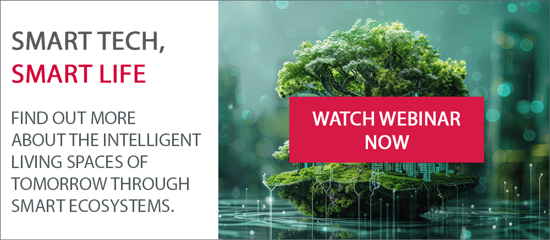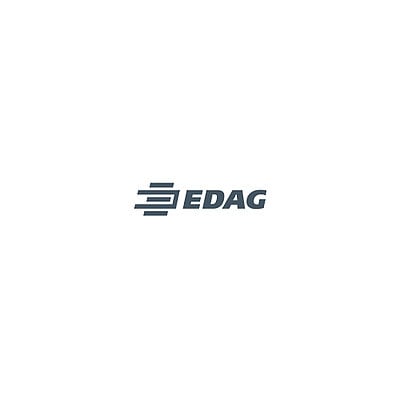Digital transformation has long meant more than simply automating existing processes. Today, companies are facing the strategic challenge of rethinking their product and service portfolio - and developing it for the future through digital business models. Many organizations are looking for approaches that go beyond the traditional offering. However, simply digitizing individual components is not enough. The decisive factor is the targeted networking of systems, products and partners - because this creates the basis for new functions, opens up additional target groups and new sales channels.
Those who network digitally instead of just digitizing create space for innovation, strengthen customer loyalty and open up new business potential. The keyword is smart ecosystem. Read on to find out what constitutes a smart ecosystem, why it is becoming increasingly relevant right now - and how companies can take a structured approach to building one.
From product to service: What makes a smart ecosystem
A smart ecosystem networks physical products with digital services - and in this way creates new added value for companies and their customers. Pure products become holistic solutions: intelligent, data-based and flexibly expandable.
The focus is on the intelligent use of data. Sensor technology, IoT platforms and artificial intelligence make it possible to collect and analyze information in real time and use it for continuous optimization - from product function to the entire service offering.
At the same time, new ways of interacting with customers and partners are opening up: via proprietary platforms, digital marketplaces or connections to existing ecosystems. This not only makes companies more efficient, but also more visible, more scalable - and more future-proof.
In short, a smart ecosystem not only transforms product usage, but also the way companies create value, grow and differentiate themselves in the market.
Why smart ecosystems are relevant right now
The demands placed on companies are changing rapidly. Customer expectations are rising, markets are becoming more dynamic - and technological developments are constantly opening up new opportunities. Against this backdrop, companies need to strategically address the question of how they can sensibly expand their existing offering and think ahead digitally.
The focus is on considerations such as:
- How can existing products be supplemented by digital services?
- What new business models are emerging from increasing digitalization?
- And how can you future-proof your own company in the long term?
Smart ecosystems offer convincing answers to these questions. They create the basis for new business models, increase operational efficiency and promote sustainable competitive advantages - through a holistically networked, scalable ecosystem.
Practical examples: How companies are successfully using smart ecosystems
How can the potential of a smart ecosystem be utilized in concrete terms? Numerous companies are already relying on networked structures - and are redesigning their business models as a result. Three selected examples show how diverse the possible applications are:
Industrial webshops: From local distribution to global reachDigital platforms enable industrial companies to make their products and services accessible worldwide - and to tap into new customer groups at the same time.
One example: an industrial company is transforming its services with an industrial web store. Here, customers can book digital services such as tests or analyses directly - automated, transparent and available around the clock.
AI-supported systems ensure predictive, data-based optimization. Operating data is analyzed in real time, processes are controlled intelligently and bottlenecks are identified at an early stage.
A use case from logistics shows the potential: AI-based route planners reduce delivery times, avoid traffic jams and reduce costs.
The combination of physical products with digital enhancements creates new opportunities and additional customer benefits.
For example, smart heat pumps could communicate independently with energy tariff platforms - and automatically select the cheapest electricity provider. This reduces running costs and strengthens customer loyalty through real added value in operation.
The path to a smart ecosystem: five steps to digital value creation
Building a smart ecosystem is a strategic process that should be planned and implemented in a targeted manner. It is crucial that technology, business model and customer added value are considered together from the outset. At EDAG, we divide the way there into five steps:
1. Analysis of existing products and services
Where is there potential for digitalization? Which existing products, processes or services can be intelligently networked or usefully expanded with digital components?
2. Development of scalable business models
Which digital services complement the existing offering? The focus is on solutions that offer real added value for customers - and can be operated economically at the same time.
3. Implementation and networking
IoT, cloud platforms and AI form the technological basis for networked systems. They enable the control and optimization of processes in real time - and create new digital value chains.
4. Operation and services
Highly available systems with integrated monitoring as well as automatic updates and optimizations ensure stability during operation - and form the basis for continuous further development.
5. Scaling
The smart ecosystem can be expanded in a targeted manner by integrating additional solutions, functions or use cases.
Conclusion: The success factor for the digital future
A smart ecosystem is far more than just a technological gimmick - it is a central building block for the sustainable competitiveness of companies. By connecting products and services in a targeted manner and adding digital value, you can tap into new sales potential, strengthen customer relationships and increase operational efficiency.
Particularly in an increasingly dynamic and data-driven market environment, smart ecosystems are becoming a strategic lever for driving innovation, responding flexibly to change and remaining resilient in the long term. The key lies in a well thought-out, step-by-step structure - with a clear focus on scalability, user centricity and technological excellence.
Go deeper now
If you have any questions about smart ecosystems, please feel free to contact our expert Jana Speidel, Senior Expert Digitalisierung Smart Factory. Or get more in-depth perspectives on the topic of smart ecosystems in the recording of our Couchtalk “Increasing productivity and flexibility through networked platforms and data management” – with practical examples and concrete recommendations for action. 





